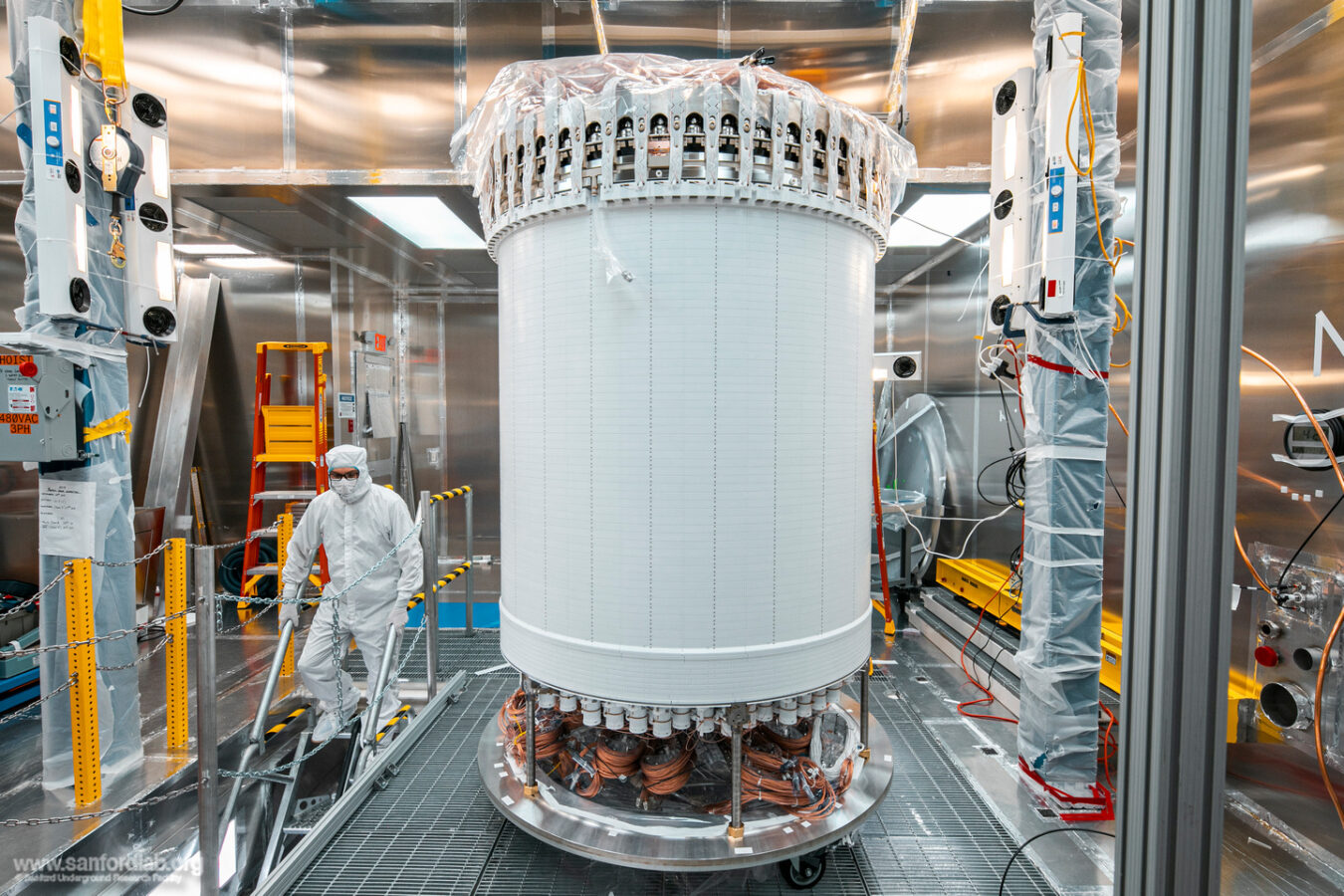Dark matter is a mysterious form of matter that makes up about 85% of the universe, but no one has ever observed it. The matter that scientists can observe, such as that which makes up our bodies, plants, rocks, and stars– all the known universe– makes up only 15%. But scientists are confident of its existence and are deploying ever more sensitive detectors to discover it. Now, they’ve narrowed down the possibilities for detecting one potential type of dark matter particle.
Weakly Interacting Mass Particles, or WIMPs, are hypothetical particles that are considered a leading candidate for dark matter. In new research presented at two major physics conferences on August 26th, astrophysicists have set limits on the size range WIMPs can have, which also limits places in which they might be found.
This is an especially exciting time for dark matter research at UCLA…I expect to see growth both in terms of the number of researchers and the amount of scientific discovery.”
Alvine Kamaha
“We found no evidence of WIMPs with masses above 9 gigaelectronvolts/c2, or about nine times the mass of a proton, at cross-sections much lower than the previous best result,” said UCLA physicist Alvine Kamaha, who is a part of an international coalition of 250 researchers across 38 institutions that conducted the new research.
WIMPs are not part of the standard model of particle physics. However, they have several key characteristics that stand out. Although they are very big and very heavy particles, they interact with a force that is possibly weaker than the nuclear force. That interaction is so weak that it would allow them to pass through normal matter almost completely undetected. WIMPs are also thought to be electrically neutral, meaning they neither emit nor absorb light.
Simply put, proving the existence of these elusive particles would confirm the existence of dark matter – one of the most pressing scientific questions of our time with profound implications for our understanding of the universe and, indeed, our very perception of reality. The new experiment’s sensitivity to faint interactions leaves significantly fewer places for WIMPs to hide. If WIMPs do in fact exist, this experiment greatly reduces the number of places scientists need to look for them.
The team found the results using the world’s most sensitive dark matter detector, LUX-ZEPLIN (LZ), managed by the Lawrence Berkeley National Laboratory. LZ uses 10 tonnes of liquid xenon to provide a dense, transparent material for WIMP dark matter particles to potentially bump into. The hope is for a WIMP to knock into a xenon nucleus, causing it to move, much like a hit from a cue ball in a game of pool. By collecting the light and electrons produced from the energy transferred in the collision, LZ captures potential WIMP signals alongside other data.

Credit: Matthew Kapust/Sanford Underground Research Facility
“By combining novel search techniques with the immense capabilities of LZ, we dug deeper than ever before in our search for dark matter, into sensitivity ranges never before accomplished,” said Kamaha.
Kamaha, who played a crucial role in the construction of the LZ detector , is an expert in the dual-phase liquid/gas xenon time projection chamber technology used by LZ. These detectors work by flashing light and releasing electrons when a particle initially hits the liquid xenon. The electrons then drift to the top of the detector where they interact within a gas xenon region to produce a second light via electroluminescence, just like how a neon sign produces light when plugged into electricity. Kamaha is confident that her experiment, LZ, has the strongest chance to WIMP discovery in the near future
Her expertise in this field has proven a boon to dark matter research at UCLA as well. Kamaha, who leads the university’s only dark matter detection research group, is currently hard at work designing a mini liquid xenon detector in her lab on campus. When that device is up and running next year, she will conduct state-of-the-art calibration R&D projects to further enhance the sensitivity of LZ and any other liquid xenon detectors. This will represent the most advanced dark matter calibration program ever to be housed at UCLA.
“This is an especially exciting time for dark matter research at UCLA,” she says. “The university has been very supportive of this work and I expect to see growth both in terms of the number of researchers and the amount of scientific discovery.”
 LZ’s central detector, the time projection chamber, in a surface lab clean room before delivery underground.
Credit: Matthew Kapust/Sanford Underground Research Facility
LZ’s central detector, the time projection chamber, in a surface lab clean room before delivery underground.
Credit: Matthew Kapust/Sanford Underground Research Facility